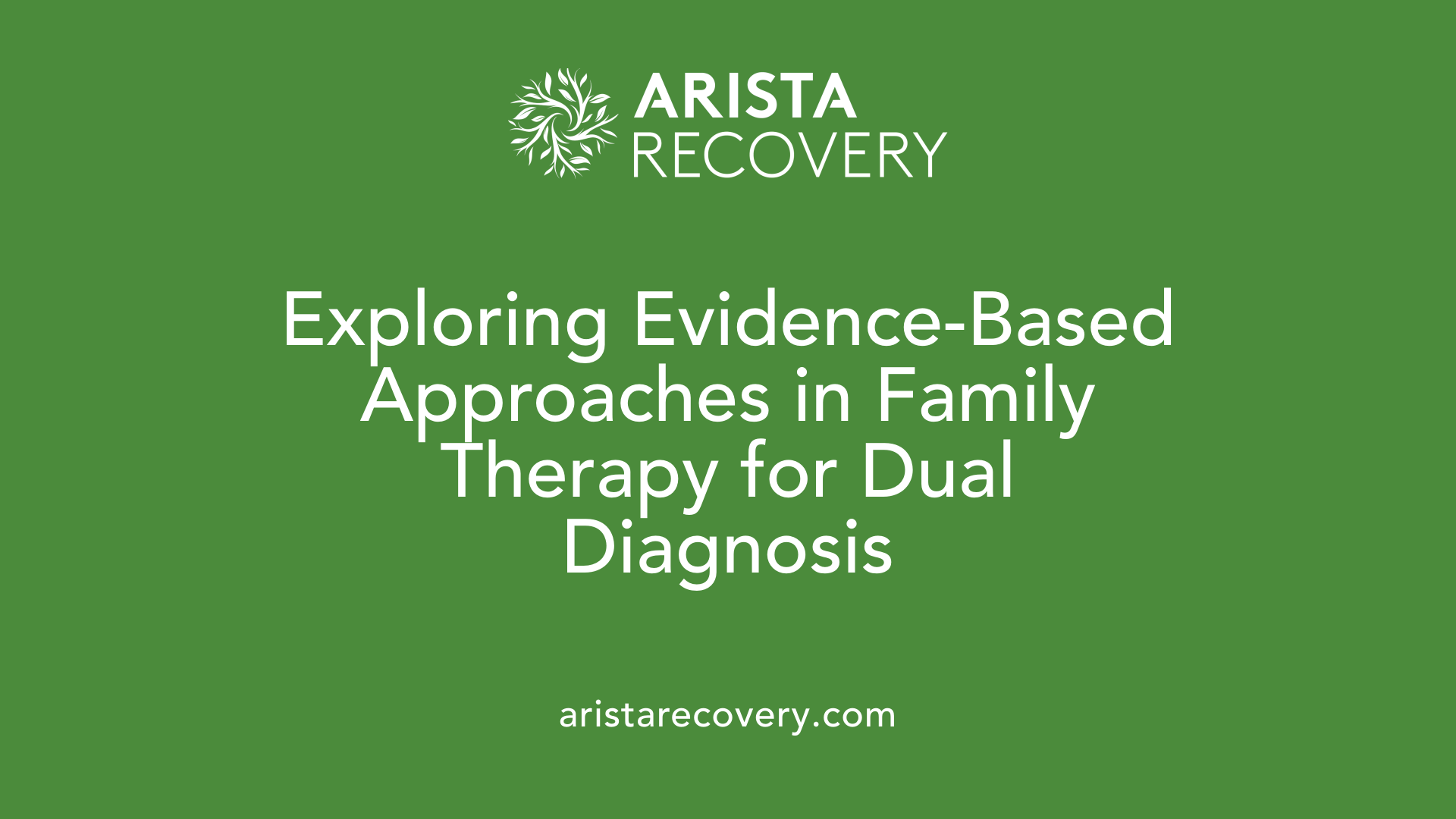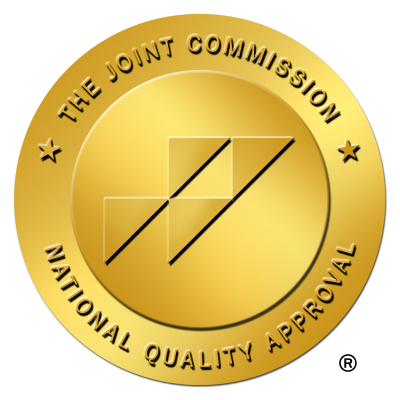How Dual-Diagnosis Treatment Incorporates Family Therapy

Introduction
As the complexity of mental health and substance use disorders becomes more apparent, integrated approaches like dual-diagnosis treatment are gaining momentum. A crucial element of this approach is family therapy, which involves families in the recovery process to improve outcomes. This article delves into the integration of family therapy in dual-diagnosis treatment, exploring its components, methods, and its critical role in supporting recovery.
Understanding Dual-Diagnosis Treatment
What is dual-diagnosis treatment?
Dual-diagnosis treatment is a comprehensive approach designed to address both mental health disorders and substance use issues simultaneously. Since these conditions often interact and exacerbate each other, integrated treatment models are employed to manage symptoms effectively, reduce relapses, and support long-term recovery.
How does dual-diagnosis treatment incorporate family therapy?
Family therapy plays a significant role within dual diagnosis treatment programs. It involves actively engaging family members in the therapeutic process aimed at supporting recovery. During sessions, families are educated about co-occurring conditions, fostering understanding and empathy.
This approach helps to improve communication, resolve conflicts, and strengthen familial relationships, which are vital for creating a stable support system. Recognizing that addiction impacts the entire family system, many treatment centers like Encore Outpatient Services include family therapy to address systemic issues.
Family members learn how to respond appropriately to their loved one’s behaviors, support treatment adherence, and manage potential triggers. This involvement can also help families cope with emotional stress and reduce familial dynamics that might contribute to substance misuse.
Overall, integrating family therapy into dual diagnosis treatment enhances engagement, supports sustained recovery, and promotes long-term stability by fostering a healthy family environment.
Importance of a coordinated, personalized approach
Effective dual diagnosis programs develop tailored care plans that include therapy, medication, lifestyle changes, and family support. A multidisciplinary team—comprising psychiatrists, psychologists, social workers, and addiction specialists—works collaboratively to provide seamless care. This coordinated effort ensures that both mental health and substance use issues are comprehensively managed, improving overall outcomes.
Components and Methods of Family Therapy

What are the components and methods of family therapy within dual-diagnosis programs?
Family therapy within dual-diagnosis treatment settings incorporates a variety of evidence-based approaches designed to improve family dynamics, facilitate recovery, and support sustained sobriety. Several specific methods are commonly employed, each with unique techniques but all aimed at fostering healthier relationships and communication.
Common family therapy approaches include:
| Approach | Description | Focus Area | Typical Techniques |
|---|---|---|---|
| Multisystemic Therapy (MST) | Community-based treatment for adolescents | Family, peer, community | Home visits, family involvement, behavioral interventions |
| Functional Family Therapy (FFT) | Brief, structured therapy for families with adolescents | Family systems, communication | Family assessments, restructuring relationships |
| Behavioral Family Therapy (BFT) | Uses behavioral principles to change interactions | Behavioral change, reinforcement | Skill training, role-playing, communication exercises |
| Psychoeducation | Educates families about disorders and recovery processes | Knowledge, awareness | Information sharing, discussion sessions |
These approaches typically involve active participation by family members in sessions led by trained therapists. Usually, sessions last about an hour, and can be adapted for individual, couple, or whole family formats.
Key components of family therapy include:
- Assessment of Family Dynamics: Evaluating family relationships, communication patterns, and functioning level.
- Educational Elements: Helping families understand mental health and substance use disorders to reduce stigma and misconceptions.
- Skill-Building: Teaching effective communication, conflict resolution, and supportive behaviors that reinforce recovery.
- Cultural Sensitivity: Tailoring interventions to respect cultural, racial, and social backgrounds, which enhances engagement and relevance.
- Relapse Prevention and Support: Strengthening the family system to provide ongoing encouragement and accountability.
Why is family therapy important in dual diagnosis?
Family involvement can significantly improve treatment adherence, reduce relapse rates, and foster a supportive environment essential for recovery. It helps family members recognize their influence on the individual's behaviors and learn ways to respond constructively. When families are equipped with knowledge and practical skills, they become active partners in the healing process.
In summary
Family therapy approaches in dual diagnosis programs are diverse but share the common goal of creating supportive, functional family environments. They use structured techniques to engage family members, address relational issues, and build a foundation for sustained recovery. Incorporating these methods into treatment plans enhances the chances of long-term success for individuals facing both mental health and substance use challenges.
Theoretical Foundations of Family Therapy
What is the theoretical basis and principles behind family therapy in dual-diagnosis treatment?
Family therapy in dual-diagnosis treatment is primarily based on systems theory, which views the family as an interconnected and dynamic system. Instead of focusing only on the individual with a substance use disorder and mental health issues, this approach considers how family relationships, communication patterns, and roles influence and maintain these disorders.
A central concept in systems theory is that behaviors are not isolated; they form part of ongoing interaction patterns within the family. These patterns, or behavior loops, can perpetuate substance misuse and mental health symptoms. To visualize and modify these cycles, therapists often employ techniques like Family Behavior Loop Mapping. This method charts sequences of thoughts, feelings, and actions among family members—especially those related to substance use—highlighting how one event triggers another in a recurring cycle.
In family therapy, understanding these behavior loops allows clinicians to identify how certain responses, like enabling or neglect, sustain substance misuse. For example, one family member’s reaction may inadvertently reinforce a client’s drug use, creating a positive reinforcement cycle. Therapists then work with the family to alter these patterns, demonstrating how changing perceptions and responses can break destructive cycles.
An important aspect of this approach involves recognizing different states within these loops, such as the "wet" state, representing active drinking or drug use, and the "dry" state, indicating sobriety. Transition phases within these loops can be targeted to help family members support recovery more effectively.
By addressing systemic issues and fostering healthier communication, family therapy enhances familial support and stability, which are vital for the individual’s recovery process. Families learn to modify interaction patterns, clarify roles, and develop new ways of responding, leading to a more supportive environment conducive to managing both mental health and substance use disorders.
Overall, the principles of family therapy rooted in systems theory emphasize that recovery is not just an individual effort but a collective transformation that involves reshaping familial dynamics to promote lasting change.
Role of Family in Recovery
What role does family involvement play in recovery from mental health and substance use disorders?
Family participation is fundamental in the treatment and ongoing support of individuals dealing with dual diagnosis, which involves both mental health and substance use challenges. Active engagement from family members provides emotional backing that can motivate individuals to stick with their treatment plans and sustain recovery over time.
Family-based interventions include a variety of methods designed to strengthen relationships, improve communication, and address systemic issues that may influence substance misuse. Approaches like Family Therapy, Community Reinforcement and Family Training (CRAFT), and Multidimensional Family Therapy (MDFT) focus on modifying family interactions that support addiction behaviors and foster a nurturing environment.
Research demonstrates that when families are involved, there are improvements in treatment adherence, reduction in relapse rates, and better overall mental health outcomes. Family members learn about addiction, how to respond appropriately, and how to support recovery without enabling destructive behaviors.
Programs that incorporate family education also help reduce familial stress and conflict, creating a healthier family dynamic which benefits everyone. For example, the SAMHSA Helpline facilitates connecting families with local resources, ensuring they receive the necessary support and treatment options.
Overall, family involvement is not just supportive but essential. It helps families understand the nature of dual diagnosis, supports systemic changes within households, and provides a foundation for sustained recovery. This collective support, education, and systemic change significantly enhance the chances of a long-term positive outcome for the individual.
Support and education for family members
Educating families about mental health issues and substance use disorders is crucial. It demystifies the conditions, reduces stigma, and equips families to handle challenges more effectively. Support groups and counseling sessions further empower families by offering them emotional support, guidance, and strategies to participate actively in their loved one's recovery journey.
By fostering an informed and empathetic environment, families can better support their loved ones through the ups and downs of recovery. This holistic approach recognizes the crucial influence family members have and encourages their active participation as part of a comprehensive treatment plan.
Benefits and Effectiveness of Family Therapy
What are the benefits and effectiveness of integrating family therapy in co-occurring disorder treatment?
Family therapy plays a vital role in treating individuals with dual diagnoses, where mental health issues and substance use disorders co-exist. Its primary benefits include fostering better communication within families, improving understanding of the disorders, and creating a supportive environment conducive to recovery.
Research supports that family-based interventions, such as Multidimensional Family Therapy (MDFT), lead to more significant reductions in both substance use and mental health symptoms like internalizing behaviors and delinquency. For adolescents, MDFT has shown to be particularly effective, maintaining gains in reducing substance use even 18 months after treatment ended.
Engaging family members actively in treatment has been linked to increased retention rates. When relatives perceive specific benefits from participation—such as improved relationships or understanding—they tend to be more motivated to stay involved. Addressing the disruptive effects of substance use on the family system helps in building resilience and preventing relapse.
Furthermore, family therapy helps identify underlying issues like trauma and family dynamics that contribute to the individual's condition. By addressing these root causes, tailored interventions can be developed that support long-term change.
Overall, evidence indicates that including family therapy in dual diagnosis treatment enhances treatment engagement, improves communication, and supports sustained recovery. Its comprehensive approach recognizes the family as a crucial element in the healing process, leading to better outcomes for individuals with co-occurring disorders.
Complementing Therapeutic Interventions

How can family therapy complement other therapeutic interventions in dual-diagnosis treatment?
Family therapy plays a crucial role in strengthening the effectiveness of other therapeutic strategies used in dual-diagnosis treatment. By addressing the interactions and relational patterns within a family system, family therapy creates a supportive environment that enhances individual-focused treatments like Cognitive Behavioral Therapy (CBT) and Dialectical Behavior Therapy (DBT).
For instance, family members are vital sources of support and accountability. When involved in family therapy, they learn skills to communicate better, manage conflicts, and reinforce positive behaviors. This collaborative approach can motivate individuals to stay engaged in their treatment plans and reduce feelings of isolation or misunderstanding.
Specific family-based models such as Multi-Dimensional Family Therapy (MDFT) or Functional Family Therapy (FFT) target behaviors and dynamics that sustain substance use and mental health symptoms. These models help modify negative patterns and strengthen reinforcing family interactions, which complements the individual work done in CBT or DBT.
Psychoeducation is another key component, increasing family understanding of addiction, mental health issues, and the importance of ongoing support. This knowledge fosters empathy and patience, reducing blame and fostering a collective effort toward recovery.
Tailoring family interventions to cultural and individual family strengths enriches the overall treatment plan, making it more relevant and effective for each person.
In summary, involving families through therapy enhances treatment engagement, improves communication, and creates a healthier social environment, which is essential for sustainable recovery in dual-diagnosis cases.
How can family involvement enhance treatment plans?
Including family members in treatment plans broadens the scope of recovery support. It helps address environmental factors that influence relapse risks while promoting positive reinforcement and behavioral change.
Family involvement can also prepare the family for challenges ahead, teach coping strategies, and enable them to participate actively in relapse prevention efforts.
Overall, integrating family therapy with individual interventions fosters a more holistic approach, increasing the likelihood of long-term success in managing dual disorders.
Utilization of Multidimensional Family Therapy (MDFT)
How is Multidimensional Family Therapy (MDFT) utilized in treating dual-diagnosis cases?
Multidimensional Family Therapy (MDFT) is an effective treatment approach for adolescents facing dual diagnosis, meaning they have both substance use disorders and mental health or behavioral issues. MDFT considers the adolescent's problems within their broader ecological system, including family, peers, school, and community.
This therapy focuses on multiple interconnected domains, such as the individual adolescent, family members, and the social environment. It aims to foster better communication, emotional regulation, and adaptive parenting practices while addressing environmental factors contributing to the dual diagnosis.
MDFT sessions are typically structured over several months and involve a combination of individual therapy for the youth, family counseling sessions, and community-based interventions. The therapy is manualized, meaning standardized techniques guide its application, ensuring consistency and fidelity.
Research studies show that MDFT significantly reduces substance use, improves emotional and behavioral symptoms, and enhances family relationships. It promotes sustainable behavioral changes by strengthening the family’s capacity to support recovery and navigate ongoing challenges.
By integrating developmental and ecological theories, MDFT tailors interventions to the unique needs of each adolescent and their family, leading to better engagement, retention, and positive outcomes in dual-diagnosis treatment.
Family Therapy for Adolescents with Co-Occurring Disorders
Why is family therapy particularly important for adolescents with co-occurring disorders?
Family therapy plays a crucial role in treating adolescents who face both mental health issues and substance use disorders, often called co-occurring or dual diagnoses. The adolescent’s family environment significantly influences their behavior, motivation, and recovery process.
Engaging the family system allows clinicians to address underlying familial issues that may contribute to or result from the adolescent’s conditions. For example, poor communication, unresolved conflicts, or misunderstandings can hinder recovery efforts. Family therapy helps to improve communication skills, resolve conflicts, and foster a supportive environment conducive to change.
Research consistently demonstrates that active family involvement correlates with better treatment adherence, longer abstinence, and improved mental health outcomes. When families understand the nature of dual diagnosis, they become vital allies in supporting the adolescent’s ongoing recovery.
Moreover, family therapy caters to the developmental needs of adolescents, incorporating cultural sensitivities and individual family dynamics. Tailored interventions consider the adolescent’s social environment, peer influences, and family strengths, creating a comprehensive approach.
In summary, family therapy provides a platform for education, emotional support, and skill-building that empowers families to support their adolescent effectively. This collaborative approach not only helps stabilize the adolescent’s mental health and reduce substance use but also promotes healthier family relationships and long-term resilience.
Engaging Families in Treatment
How can family be involved in the treatment and recovery process of a loved one with dual-diagnosis?
Family involvement is essential in managing dual diagnosis, where an individual suffers from both a mental health disorder and a substance use disorder. Engaged families not only support recovery but also improve treatment retention and outcomes.
One primary way families can participate is by attending therapy sessions. Family therapy sessions, such as those based on systemic or multi-dimensional approaches, aim to enhance communication, resolve conflicts, and modify behaviors that may support substance misuse. These sessions help family members understand the complexities of dual diagnosis, including how mental health symptoms and substance use influence each other.
Educating family members about substance use and mental health issues empowers them to respond appropriately and supportively. Knowledge about behavioral triggers, relapse prevention, and emotional regulation helps families foster a stable environment and promote healthy routines.
Supporting recovery also involves helping the individual implement coping strategies learned during treatment. Families can encourage participation in support groups like Alcoholics Anonymous (AA) or Narcotics Anonymous (NA), which provide community support and accountability.
Open, ongoing communication is crucial. Regular check-ins, emotional support, and reassurance strengthen family bonds and create a safety net for the individual. For children and adolescents, parental education and supportive involvement are especially beneficial, reducing stress and preventing early substance use.
Finally, families should be equipped with resources and access to support services. Family support groups, counseling, and community programs offer a platform for sharing experiences and gaining practical advice, which can ease the emotional toll often associated with caring for someone with dual diagnosis.
Overall, involving families diligently and compassionately in treatment plans fosters a more resilient recovery environment. Such involvement addresses familial patterns that might hinder progress and promotes long-term stability and well-being for the whole family.
Challenges and Innovations in Family Therapy
What are the barriers to implementing family therapy?
Family therapy is a valuable component of dual diagnosis treatment, but various obstacles can hinder its effective implementation. Common barriers include family members’ emotional exhaustion, especially when dealing with active addiction or experiencing family conflict. Restrictions like violence, denial of substance misuse, or refusal to participate can also make engagement difficult. Additionally, limited access to trained family therapists and inadequate awareness or understanding of family-based interventions can impede adoption. Policy fragmentation and lack of funding further restrict the widespread use of comprehensive family programs, particularly in underserved communities.
What are some innovative practices that enhance family engagement?
Emerging practices aim to overcome these challenges by making family therapy more accessible and appealing. Virtual family therapy sessions via online platforms have gained popularity, providing flexible options that reduce logistical barriers. Personalized approaches that cater to individual family dynamics also improve engagement, helping family members feel supported rather than overwhelmed.
Moreover, integrating motivational interviewing techniques within family sessions can boost motivation and participation. Strength-based counseling emphasizes the family’s strengths, fostering positive interactions and resilience. Programs like multi-dimensional family therapy (MDFT) and community reinforcement approaches also incorporate community and peer support to diversify engagement avenues.
These innovations not only expand access but also promote sustained involvement, which is crucial for durable recovery in individuals with dual disorders. Overall, addressing barriers with creative solutions enhances the effectiveness of family therapy, fostering supportive environments vital to successful dual diagnosis treatment.
Future Directions for Family Therapy in Dual-Diagnosis

Emerging trends and research in family therapy
Recent research highlights the ongoing evolution of family-based approaches for dual diagnosis, with an increasing focus on customizing therapy to individual family dynamics and cultural backgrounds. Innovations include virtual family therapy sessions, making it easier for families to participate regardless of geographical or time constraints. Studies also show that integrating trauma-informed care within family therapy improves outcomes, especially for clients with complex trauma histories.
Another emerging trend involves utilizing new technologies like apps and online platforms to facilitate ongoing family engagement and skill-building. Moreover, research supports the effectiveness of multilevel interventions that combine family therapy with community reinforcement strategies, fostering long-term recovery.
Potential improvements in integrated treatment models
Integrated treatment models are becoming more sophisticated, emphasizing seamless coordination across mental health and substance use services. Future improvements may include enhanced training for clinicians to address cultural competence and trauma sensitivity more effectively.
Adding a personalized, phased approach to therapy—starting with engagement and motivation, then progressing to skill acquisition and relapse prevention—may optimize outcomes. Incorporating peer support specialists into family therapy could furthermore provide relatable role models, encouraging sustained participation and recovery.
Overall, the future of family therapy in dual diagnosis looks promising with advancements in personalized care, technology integration, and comprehensive community support systems, aiming to improve engagement, retention, and recovery success.
Conclusion
Family therapy is not just an adjunct to dual-diagnosis treatment but a foundational element that enhances recovery through fostering understanding, communication, and systemic change within families. As research continues to highlight its benefits, integrating family therapy remains a priority in developing effective, comprehensive treatment plans. The future of dual-diagnosis treatment lies in recognizing the interconnected dynamics of mental health and substance use disorders, leveraging family systems to facilitate long-lasting recovery, and constantly innovating to address challenges and changing needs.
References
- Family Intervention for Co-occurring Substance Use and Severe ...
- Why Pick Dual Diagnosis Treatment for Co-Occurring Disorders
- Chapter 3—Family Counseling Approaches - NCBI
- Family Therapy for Substance Use Disorders and Addiction Recovery
- What is Dual Diagnosis Treatment? - Family First Intervention
- Family Therapy for Addiction Treatment
- Dual Diagnosis: An Overview - Lincoln Trail Behavioral Health
- Understanding Dual Diagnosis - Roaring Brook Recovery Center
- Effective Dual Diagnosis Treatment Approaches - Key Healthcare
- Treatment for Women with Dual Diagnosis Addiction
You’re not alone in this.
When mental health challenges and addiction intersect, it can feel isolating. At Arista, we offer compassionate, evidence-based, and trauma-informed care to help you heal, grow, and move forward.
You’re not alone in this.
When mental health challenges and addiction intersect, it can feel isolating. At Arista, we offer compassionate, evidence-based, and trauma-informed care to help you heal, grow, and move forward.
Support that moves with you.
You’ve taken a brave first step. At Arista Recovery, we’re here to help you continue with best-in-class care designed for long-term healing and support.
.webp)






